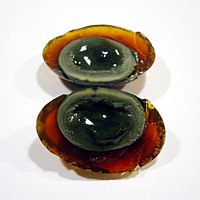
PyWRKY26 and PybHLH3 cotargeted the PyMYB114 promoter to regulate anthocyanin biosynthesis and transport in red-skinned pears.
Sign Up to like & getrecommendations! Published in 2020 at "Horticulture research"
DOI: 10.1038/s41438-020-0254-z
Abstract: Red pear is favored because of its bright appearance and abundant anthocyanins. Anthocyanin biosynthesis is controlled by transcription factors (TFs) forming regulatory complexes. In red-skinned pears, the WRKY TFs have a significant relationship with anthocyanin… read more here.
Keywords: red skinned; pywrky26 pybhlh3; anthocyanin biosynthesis; skinned pears ... See more keywords

Cooking and In Vitro Digestion Modulate the Anti-Diabetic Properties of Red-Skinned Onion and Dark Purple Eggplant Phenolic Compounds
Sign Up to like & getrecommendations! Published in 2022 at "Foods"
DOI: 10.3390/foods11050689
Abstract: The intake of phenolic-rich foods is an emerging preventive approach for the management of type 2 diabetes, thanks to the ability of these compounds to inhibit some key metabolic enzymes. In this study, the influence… read more here.
Keywords: red skinned; vitro digestion; skinned onion; cooking vitro ... See more keywords

Candidate genes associated with red colour formation revealed by comparative genomic variant analysis of red- and green-skinned fruits of Japanese apricot (Prunus mume)
Sign Up to like & getrecommendations! Published in 2018 at "PeerJ"
DOI: 10.7717/peerj.4625
Abstract: The red-skinned fruit of Japanese apricot (Prunus mume Sieb. et Zucc) appeals to customers due to its eye-catching pigmentation, while the mechanism related to its colour formation is still unclear. In this study, genome re-sequencing… read more here.
Keywords: red skinned; colour formation; prunus mume; candidate genes ... See more keywords